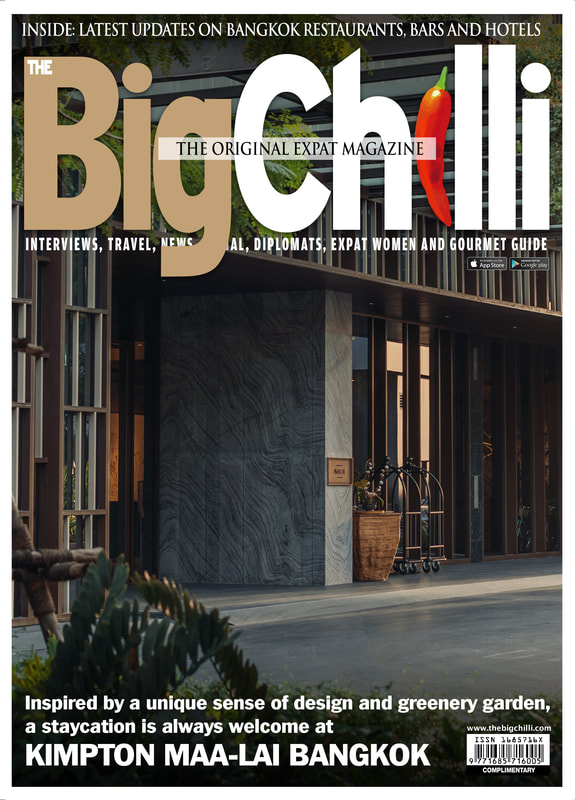Words and Photographs ANTHONY FARRAR
Neighbouring Laos is a great place to visit, except for the roads and none of the animals for which it is famed
Neighbouring Laos is a great place to visit, except for the roads and none of the animals for which it is famed
| AFTER driving from Ayutthaya through torrential rain in Udon to the far northern town of Nong Khai, we eventually reached the Thai-Laos border. A short distance before the border, there is a long-term car park, where we parked up. Some helpful people at a desk in the car park arranged a minibus and Laos visa forms for us. We were driven to the Thai border post, then across the extremely wide Friendship Bridge over the Mekong River. I believe it is possible to take a train across and I saw the tracks but no trains. |
Formalities on the Laos side were minimal and took only 20 minutes. We were then driven to the capital, Vientiane. It is not dissimilar to a provincial town in Thailand, apart from the fact that they drive on the right.
One night in a hotel and then off to rent a car. We chose a subsidiary of Avis and for US$100 a day we hired a Ford Everest a, two/four wheel drive SUV (we never needed to use the four-wheel drive) and off we went. Driving in Laos is equally chaotic as Thailand with the added hazard of very poor roads, massive potholes, indifferent and poor drivers, and grossly overloaded vehicles.
Every bridge and village is named, but signposts are virtually non-existent. Good maps are needed and visitors should not be afraid to ask directions. Most people understand Thai.
Once out of Vientiane we crossed flat lands, with mountains looming ahead. Entering the foothills we began an eight-hour climb. Switchback roads, a great many potholes (some several centimetres deep and metres wide), slow motorbikes, overloaded logging trucks, and coaches. Overall though the traffic was light and polite.
The villages of the mostly wooden houses, along the roads teem with children of all ages. Nearly all are barefoot and fortunately all have good road sense. I was never worried about children dashing into the road, but there were additional hazards of goats, families of chickens, which appeared to want to commit suicide with last minute dashes across the road, water buffalo and cows (the latter like to sleep in the middle of the road).
All life exists along the roads: people showered in road-side streams and did their washing there too. Children bathed en masse. Small children carried even smaller children on their backs; boys were heading into the jungle with large nets to catch birds or perhaps insects. All manner of goods were being sold along the road and occasionally, men with Kalashnikovs (hardly the hunter’s weapon of choice) were seen strolling along quite casually.
One night in a hotel and then off to rent a car. We chose a subsidiary of Avis and for US$100 a day we hired a Ford Everest a, two/four wheel drive SUV (we never needed to use the four-wheel drive) and off we went. Driving in Laos is equally chaotic as Thailand with the added hazard of very poor roads, massive potholes, indifferent and poor drivers, and grossly overloaded vehicles.
Every bridge and village is named, but signposts are virtually non-existent. Good maps are needed and visitors should not be afraid to ask directions. Most people understand Thai.
Once out of Vientiane we crossed flat lands, with mountains looming ahead. Entering the foothills we began an eight-hour climb. Switchback roads, a great many potholes (some several centimetres deep and metres wide), slow motorbikes, overloaded logging trucks, and coaches. Overall though the traffic was light and polite.
The villages of the mostly wooden houses, along the roads teem with children of all ages. Nearly all are barefoot and fortunately all have good road sense. I was never worried about children dashing into the road, but there were additional hazards of goats, families of chickens, which appeared to want to commit suicide with last minute dashes across the road, water buffalo and cows (the latter like to sleep in the middle of the road).
All life exists along the roads: people showered in road-side streams and did their washing there too. Children bathed en masse. Small children carried even smaller children on their backs; boys were heading into the jungle with large nets to catch birds or perhaps insects. All manner of goods were being sold along the road and occasionally, men with Kalashnikovs (hardly the hunter’s weapon of choice) were seen strolling along quite casually.
| The drive was quite exhausting with what seemed perpetual steep ascents and tight, blind bends, crumbling road edges and the ubiquitous potholes. Overtaking was essential but lethal. Having said that, truck drivers pulled over where possible and waved us past. After climbing to almost 6,000 feet we reached the top of the mountain pass, ready for the descent into Luang Prabang. The views are stunning. The descent was the climb in reverse, constant twisting, turning, braking and jarring potholes. |
We arrived in Luang Prabang, a World Heritage city of low-rise buildings, clean wide streets, cafes and temples – a reminder perhaps of what Thailand looked like 50 years ago. We visited the night market, the exquisite Xieng Thong temple and then the next day set off into the mountains once again, heading for Phonsovan and the fabled Plain of Jars.
Another day of climbing, twisting and turning, avoiding the wildlife and covering little ground. Oh! And it was now raining. We reached Phonsovan. And what a miserable, muddy, depressing place it is too. Like a provincial industrial town in China. After a night in a big, but none too friendly Vietnamese-run hotel we set off for Site 1 of the Plain of Jars (there are 70 such sites but only seven have been cleared of mines, left over from the Vietnam War). Site 1 has the most jars and the biggest jar.
It was still raining, it was quite cold and we had no waterproofs or umbrellas. A quick look at the jars (another World Heritage site) and it was back into the mountains and back to Vientiane. The Plain of Jars? Worth seeing, yes; but not worth going to see (apologies to Dr Samuel Johnson).
Seven hours later we arrived at what seemed like civilisation. We spent the night in Vientiane with a bit of sightseeing, including the huge concrete ‘Victory Gate,’ which celebrates the fight to rid the country of French colonial rule.
The next morning we took a taxi to the border and after queuing, form-filling and paying our exit tax of about 40 baht each, we were driven across the Friendship Bridge (still no train in sight) and back to our car.
Being back in Thailand was like coming home to a pair of comfortable slippers, good roads, good food, 7/11 and a Friday afternoon/evening 14-hour drive from Nong Khai to Ayutthaya.
Laos is called ‘The Land of a Million Elephants’ but we didn’t see even one. It is, however, well worth a visit; it’s different in many ways, and just next door.
Another day of climbing, twisting and turning, avoiding the wildlife and covering little ground. Oh! And it was now raining. We reached Phonsovan. And what a miserable, muddy, depressing place it is too. Like a provincial industrial town in China. After a night in a big, but none too friendly Vietnamese-run hotel we set off for Site 1 of the Plain of Jars (there are 70 such sites but only seven have been cleared of mines, left over from the Vietnam War). Site 1 has the most jars and the biggest jar.
It was still raining, it was quite cold and we had no waterproofs or umbrellas. A quick look at the jars (another World Heritage site) and it was back into the mountains and back to Vientiane. The Plain of Jars? Worth seeing, yes; but not worth going to see (apologies to Dr Samuel Johnson).
Seven hours later we arrived at what seemed like civilisation. We spent the night in Vientiane with a bit of sightseeing, including the huge concrete ‘Victory Gate,’ which celebrates the fight to rid the country of French colonial rule.
The next morning we took a taxi to the border and after queuing, form-filling and paying our exit tax of about 40 baht each, we were driven across the Friendship Bridge (still no train in sight) and back to our car.
Being back in Thailand was like coming home to a pair of comfortable slippers, good roads, good food, 7/11 and a Friday afternoon/evening 14-hour drive from Nong Khai to Ayutthaya.
Laos is called ‘The Land of a Million Elephants’ but we didn’t see even one. It is, however, well worth a visit; it’s different in many ways, and just next door.

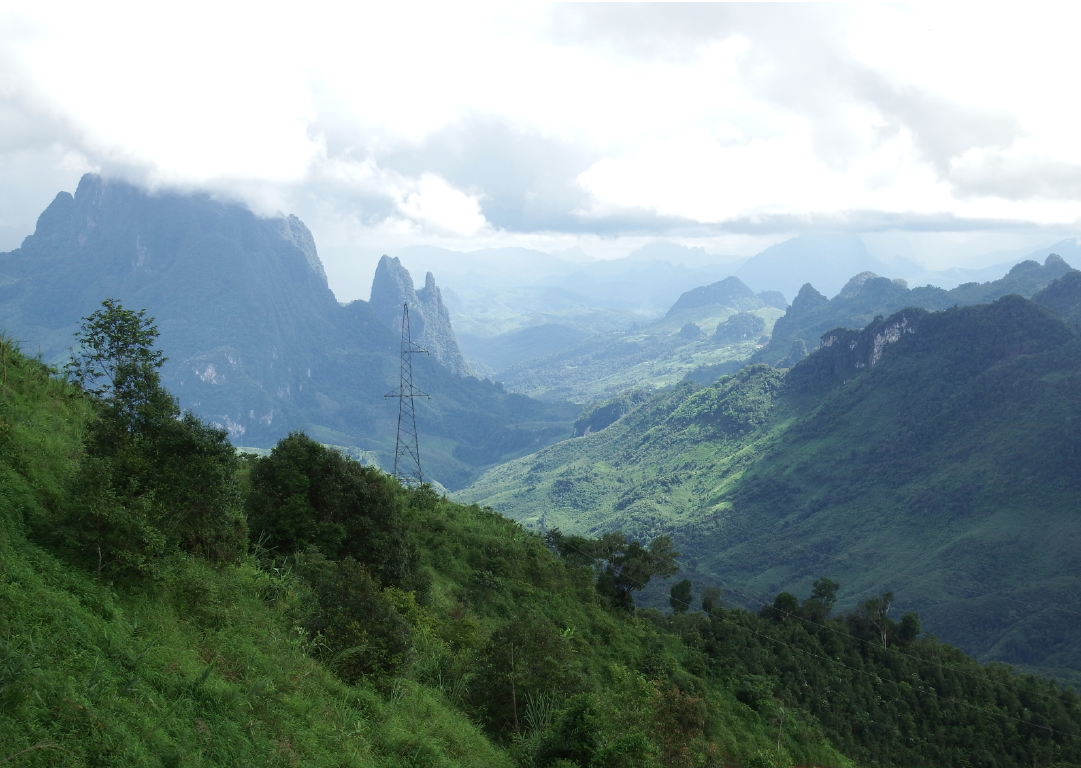
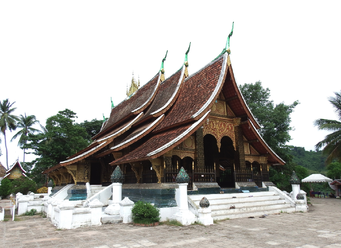
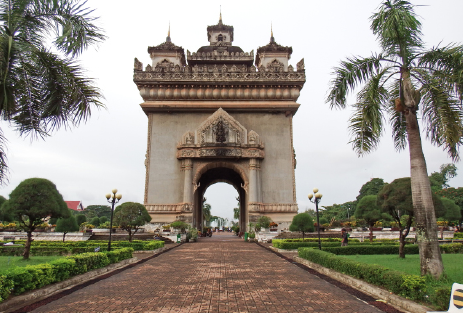
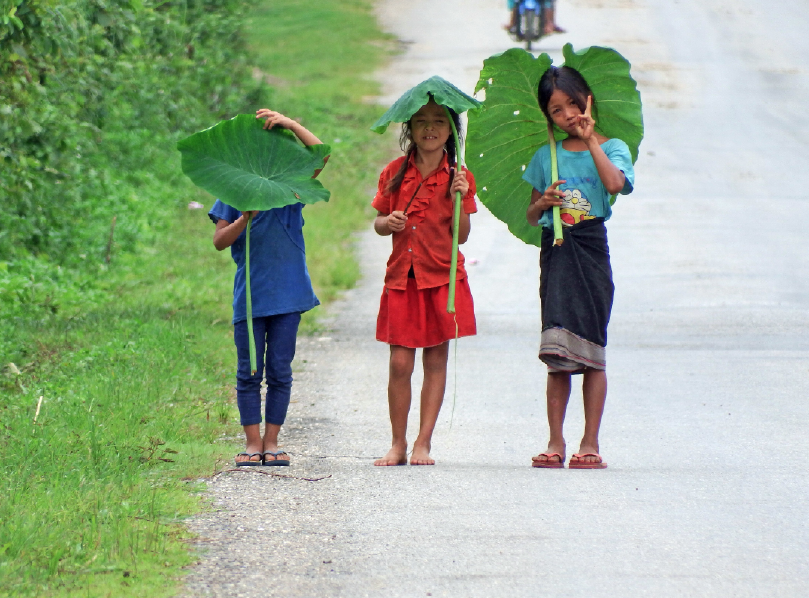
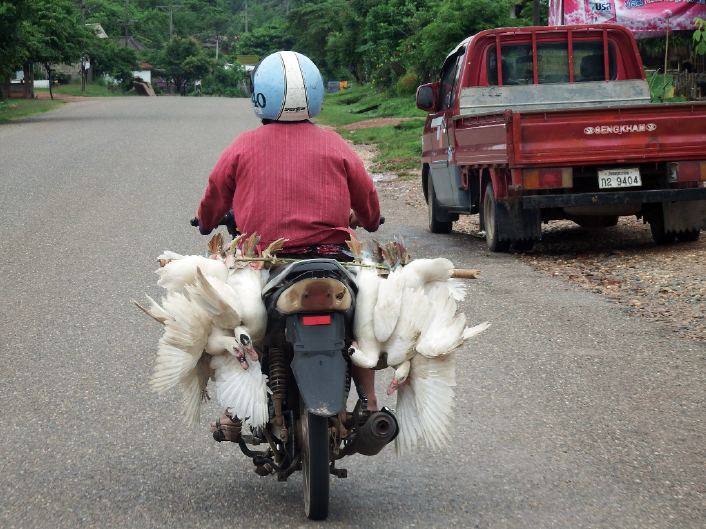
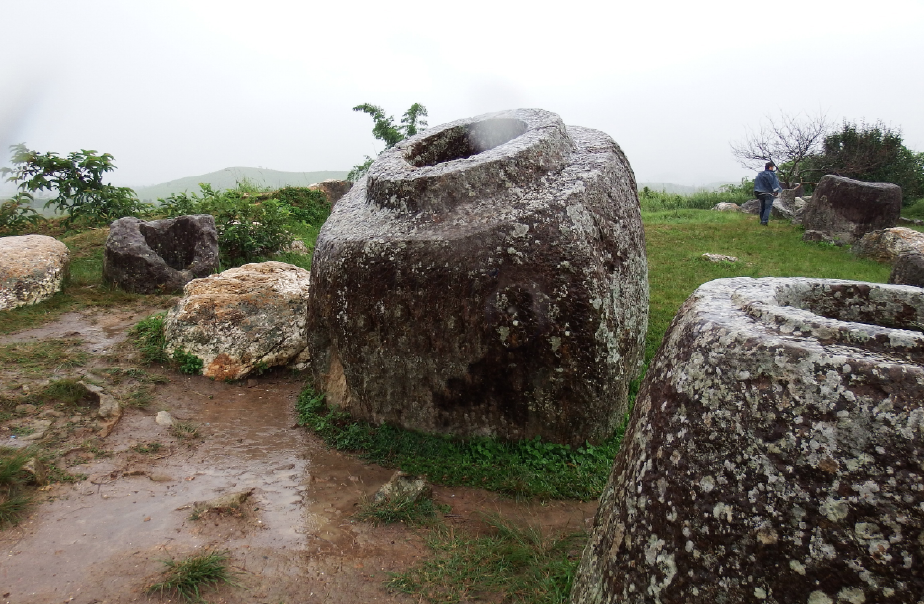
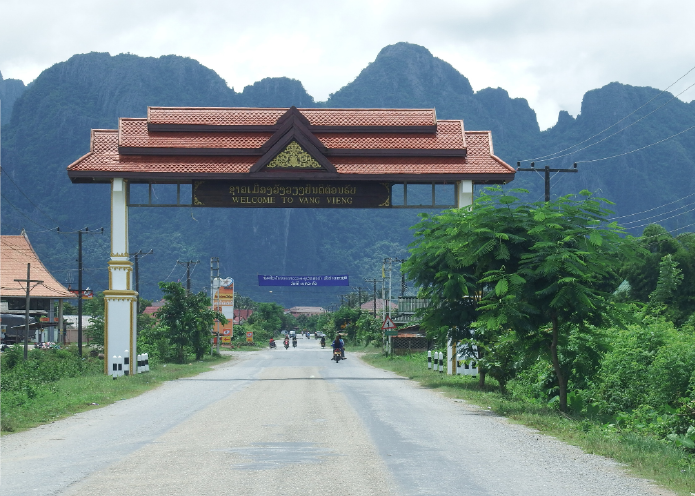
 RSS Feed
RSS Feed





